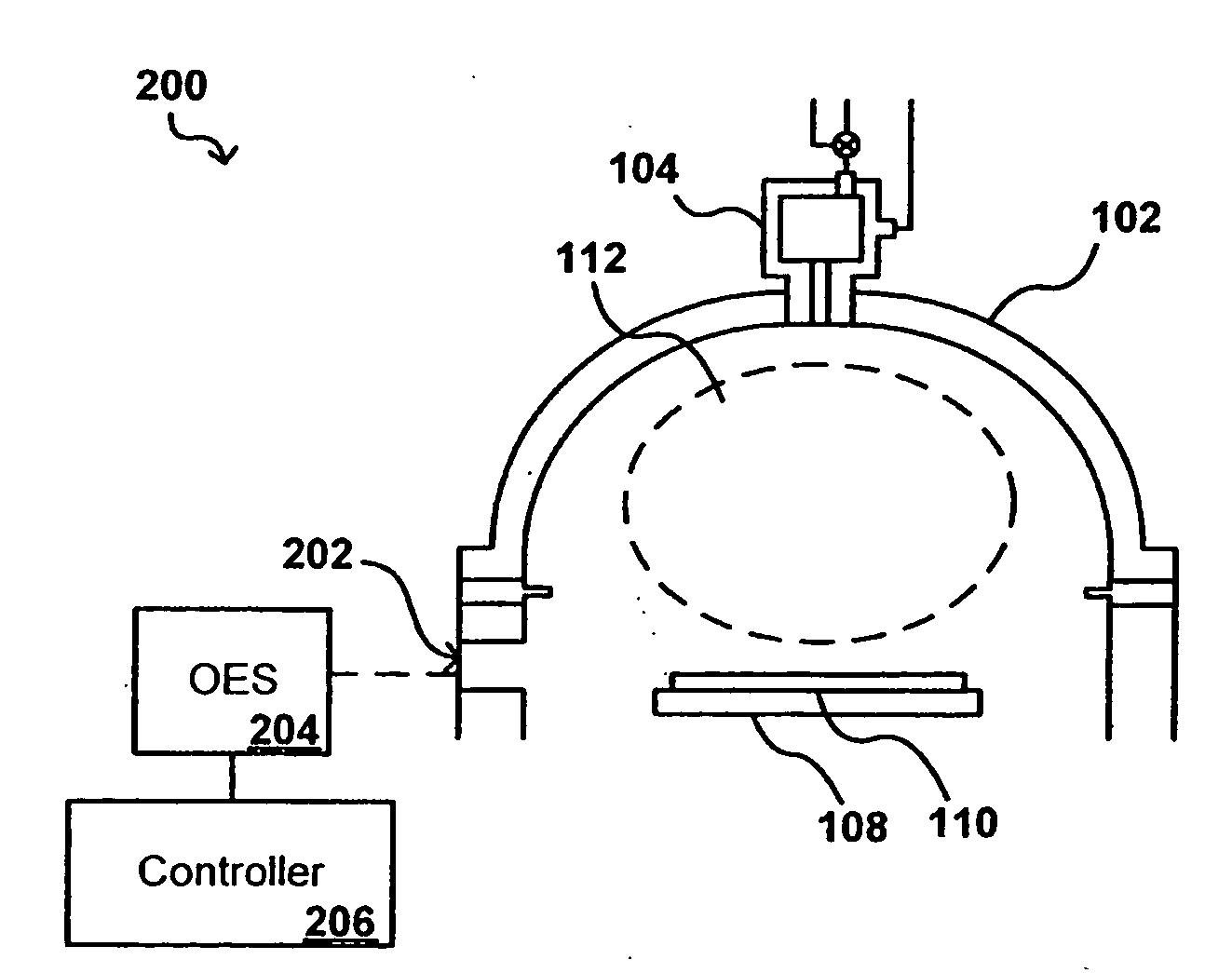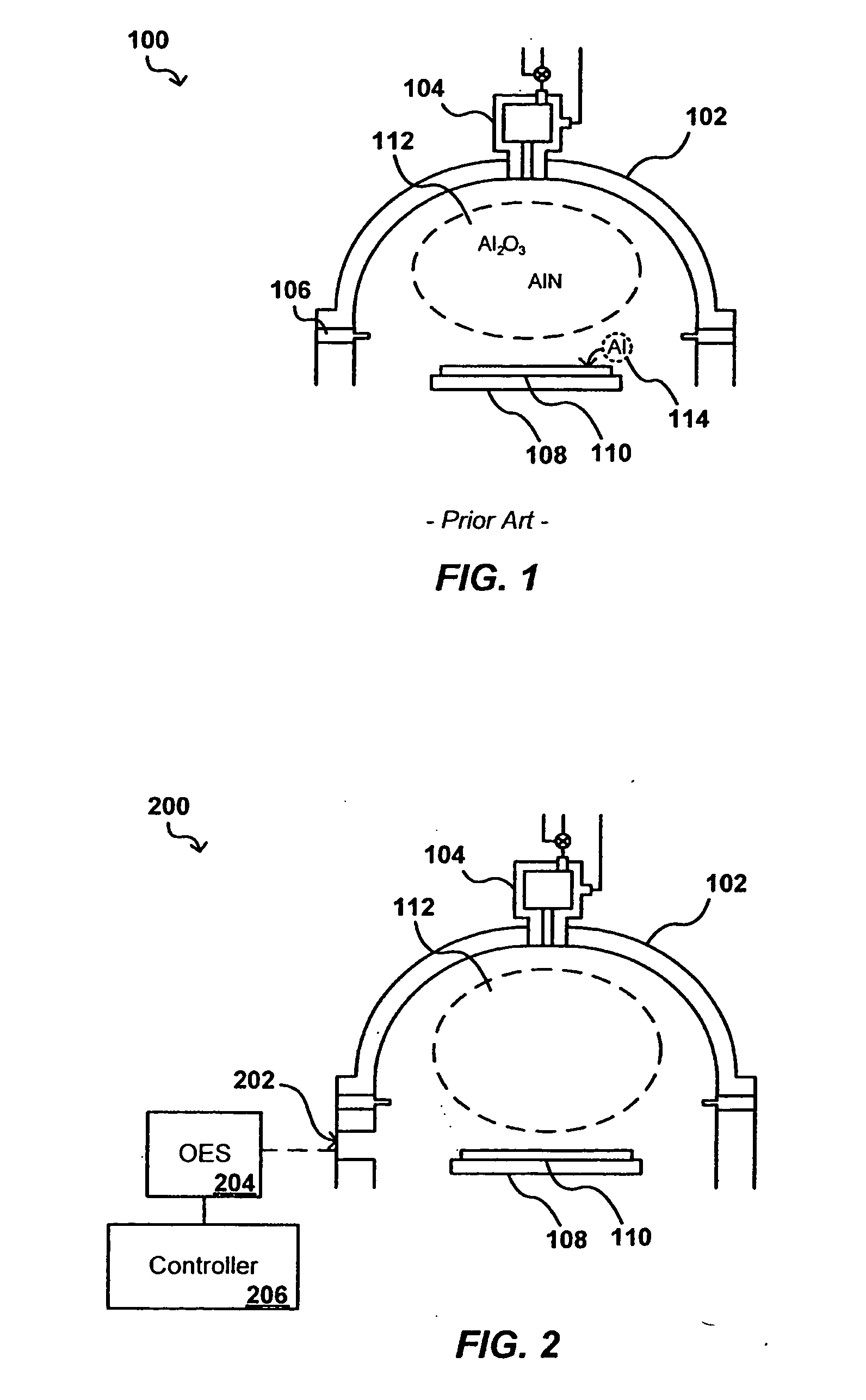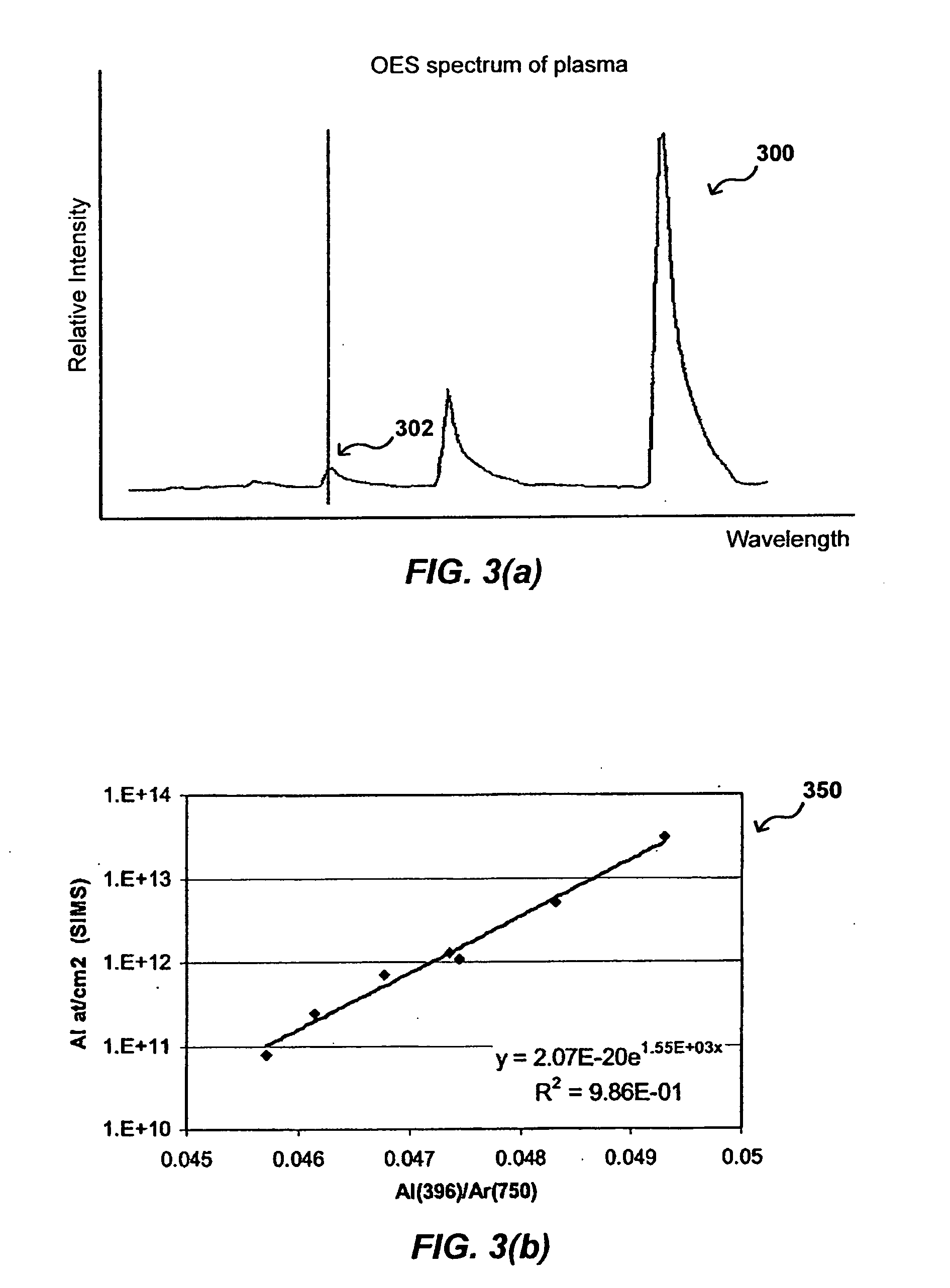In-situ process diagnostics of in-film aluminum during plasma deposition
a technology of in-situ process and aluminum, applied in the direction of plasma technique, instruments, coatings, etc., can solve the problems of metal contaminants, particularly detrimental to dielectric layers, contaminants that can be deposited on surfaces, etc., and achieve the effect of less cos
- Summary
- Abstract
- Description
- Claims
- Application Information
AI Technical Summary
Benefits of technology
Problems solved by technology
Method used
Image
Examples
Embodiment Construction
[0018]Systems and methods in accordance with various embodiments of the present invention can overcome the aforementioned and other deficiencies in existing processing systems by providing for an in-situ determination of contaminant content. In one embodiment, the optical emission of a plasma in a chemical vapor deposition (CVD) process is examined during a deposition in order to determine the aluminum content of the plasma. A maximum aluminum content threshold can be used to determine when the plasma is at or near a maximum aluminum content, such that processing can be stopped and the CVD system can be treated to reduce the amount of aluminum contaminants passing into the plasma and, accordingly, into or onto the processed devices.
[0019]For example, FIG. 1 illustrates a cross-section of a portion of an exemplary plasma deposition chamber 100 useful for depositing a film on a substrate 110, such as a silicon wafer. The substrate is placed on a substrate support 108 in the chamber, w...
PUM
| Property | Measurement | Unit |
|---|---|---|
| temperature | aaaaa | aaaaa |
| temperature | aaaaa | aaaaa |
| pressures | aaaaa | aaaaa |
Abstract
Description
Claims
Application Information
 Login to View More
Login to View More - R&D
- Intellectual Property
- Life Sciences
- Materials
- Tech Scout
- Unparalleled Data Quality
- Higher Quality Content
- 60% Fewer Hallucinations
Browse by: Latest US Patents, China's latest patents, Technical Efficacy Thesaurus, Application Domain, Technology Topic, Popular Technical Reports.
© 2025 PatSnap. All rights reserved.Legal|Privacy policy|Modern Slavery Act Transparency Statement|Sitemap|About US| Contact US: help@patsnap.com



